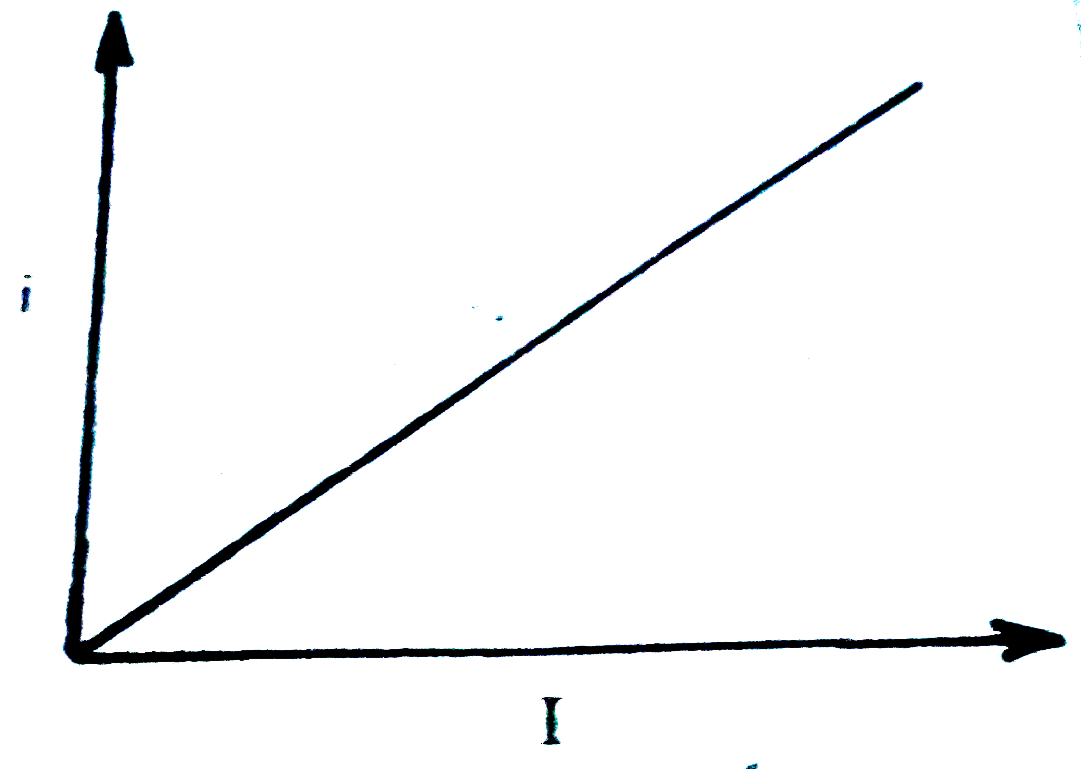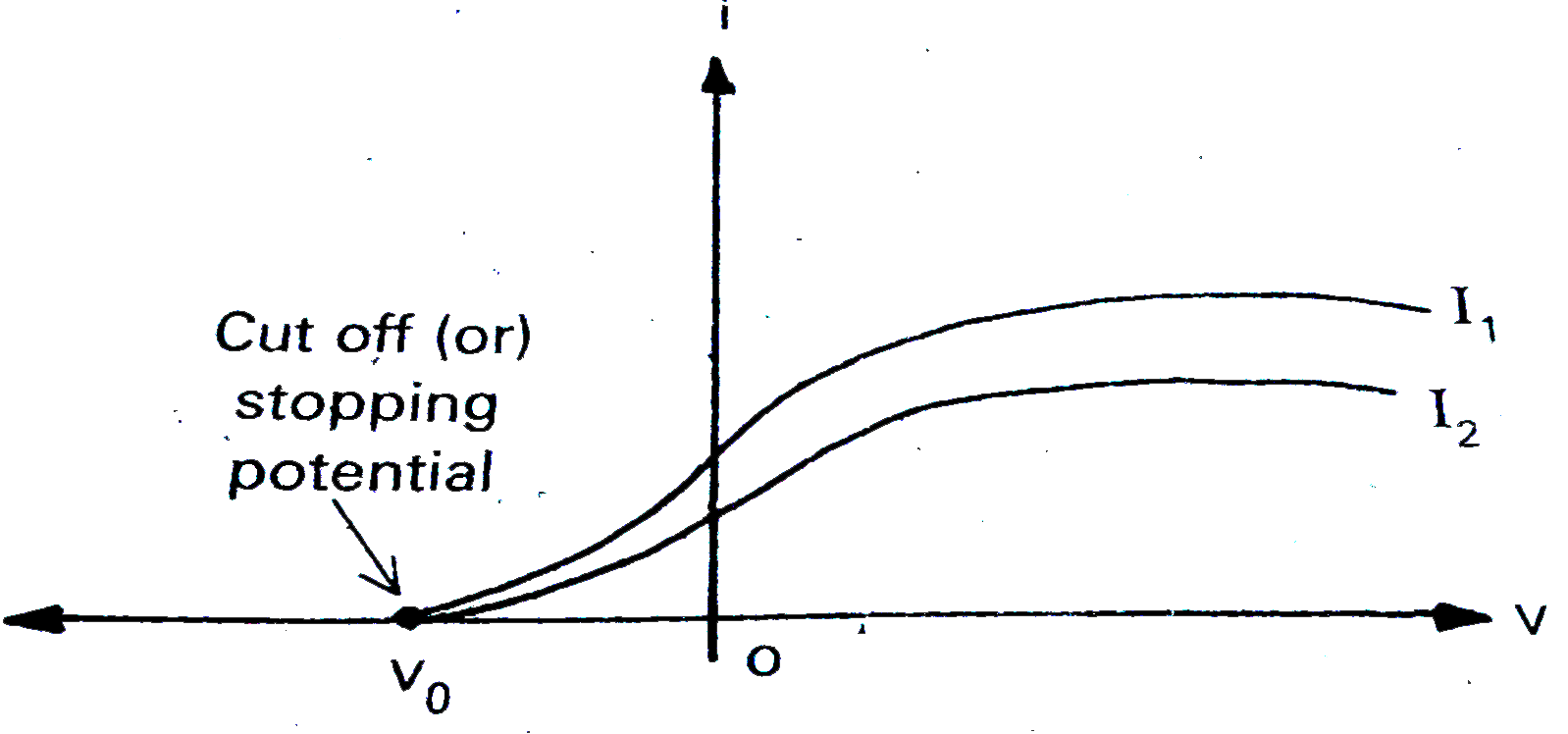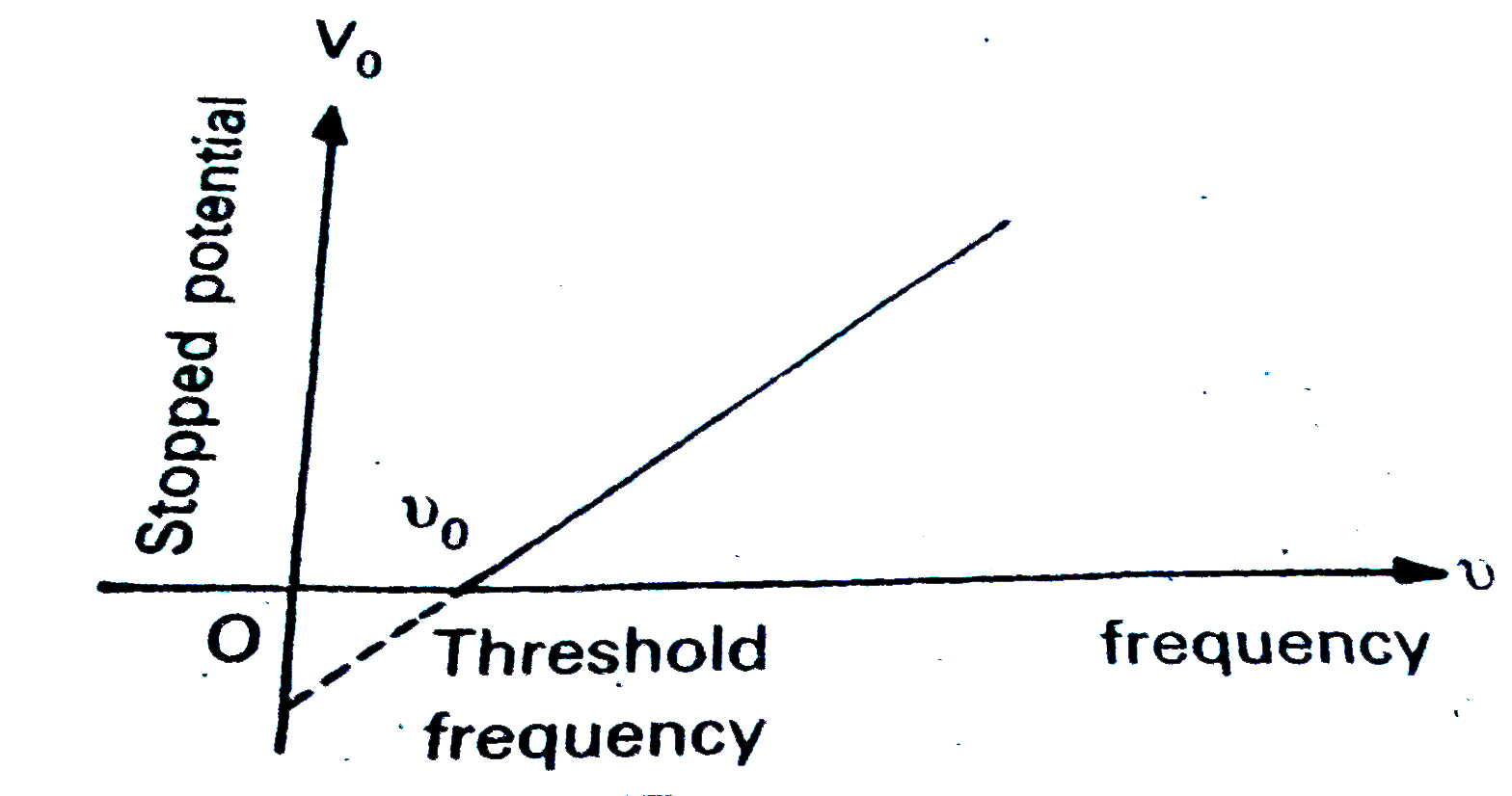How did Einstein's photoelectric equation explain the effect of intensity and potential incident on photoelectric current ? How did this eqaution account for the effect of frequency of incident light on stopping potential ?
(1) Einstein postulated that a beam of light consists of small energy packets called photons or quanta.
(2 ) The energy of photon is E = hv . Where ' h ' is Planck's constant , v is frequency of incident light ( or radiation ) .
(3 ) If the absorbed energy of photon is greater than the work function (ϕ0=hv0) , the electron is emitted with maximum kinetic energy i.e, Kmax=12mv2max=eV0=hv−ϕ0 . This equation is known as Einstein's photoelectric equation .
(4) Effect of intensity of light on photoelectric current :
When the intensity (I) of incident light , with frequency greater than the threshold frequency (v0>v0) is increased then the number of photoelectrons emitted decreases i.e the value of photoelectric current (i) increases ie. i∝I . ,
(5 ) On increasing the positive potential on collecting electrode , the photoelectric current increases. At a particular positive potential , the photocurrent becomes maximum which is known as saturated current .
(ii) On increasing the value of negative potential the value of photoelectric current becomes zero. This is known as stopping potential (v0)
(iii) Stopping potential does not depend on the intensity of incident light . On increasing intensity , the value of saturated current increases, whereas the stopping potential remains unchanged.
(6) The effect of frequency of incident radiation on stopping potential :
On increasing the frequency of incident light, the value of stopping potential goes on increasing gradually as shown in fig . That means kmax increases eV0 also increases .
(7) From the graph , we note that
(i) For a given photosensitive metal , the cut off potential (v0) varies linearly with the frequency of the incident rediation .
(ii) For a given photosensitive metal, there is a certain minimum cut off frequency v0 (called threshold frequency ) for which the stopping potential is zero .
(8) From the graph we note that ,
(i) The value of cut - off potential is different for radiation of different frequency .
The value of stopping potential is more negative for radiation of higher incident frequency .
( 9) From above experiments , it is found that , if the incident radiation is of higher frequency than that of threshold frequency , the photoelectric emission is possible .




Topper's Solved these Questions
Similar Questions
Find the
(a) maximum frequency, and
View SolutionPhotoelectric Effect||Photoelectric Equation||Stopping Potential||Variation OF Potential with Frequency and Intensity
View SolutionWhat is meant by stopping potential in photoelectric emission? Does the stppping potential depend on the intensity and the frequency of the incident light? Explain.
View SolutionGraph of incident freuency with stopping potential in photoelectric effect is
View SolutionWhat is the effect of intensity of incident light on the photoelectric current?
View SolutionAssertion : When the intensity of light incident on the emitting surface of a photoelectric cell is increased, the photoelectric current and the stopping potential both increase. Reason : The potential difference required to stop the current depends upon the frequency and intensity of the incident light.
View Solutionप्रकाश - विघुत प्रभाव में आपतित प्रकाश की तीव्रता बढ़ाने पर निरोधी विभव का मान
View SolutionDefine the term threshold frequency and stopping potential in relation to phenomenon of photoelectric effect. How is the photoelectric current affected on increasing the
intensity of incident radiation and why?
View Solution

